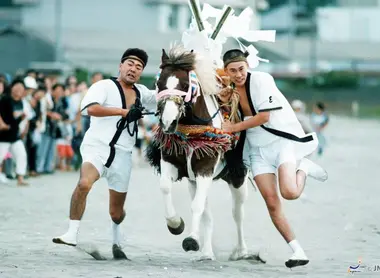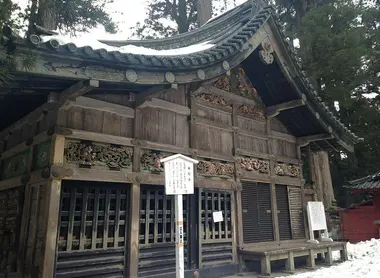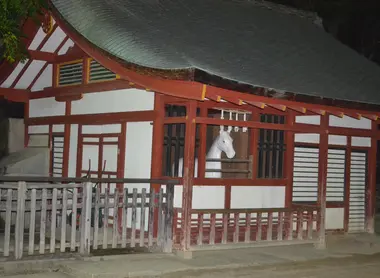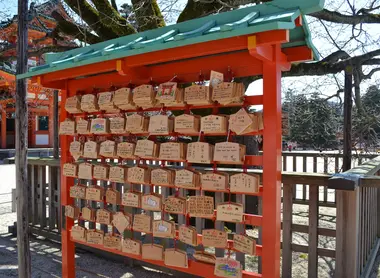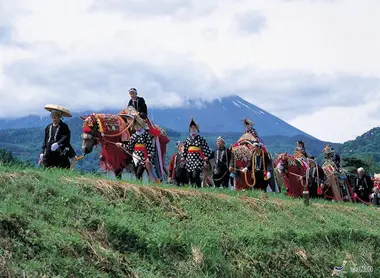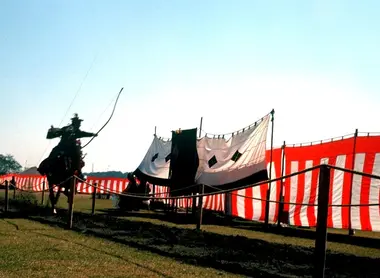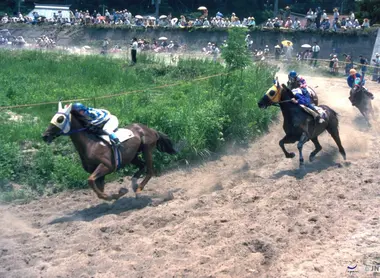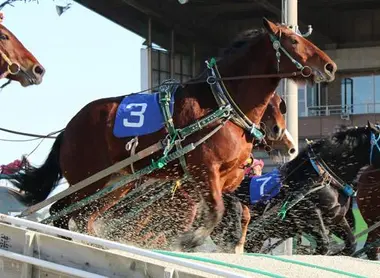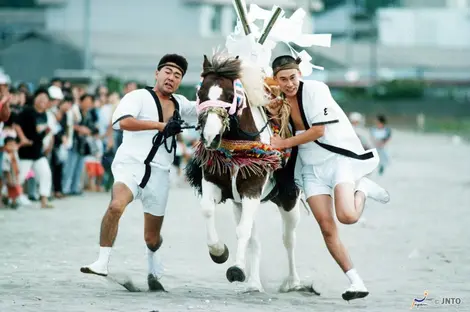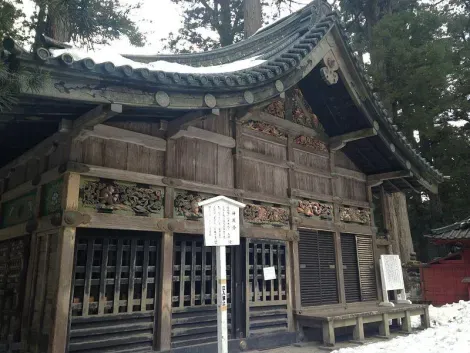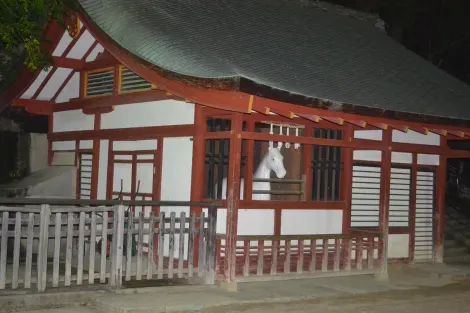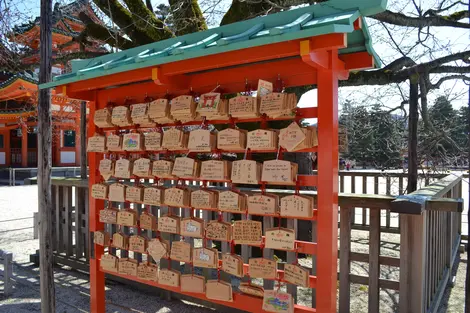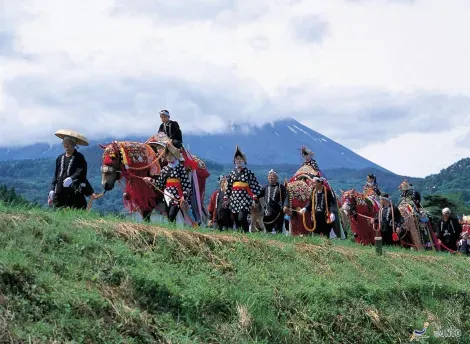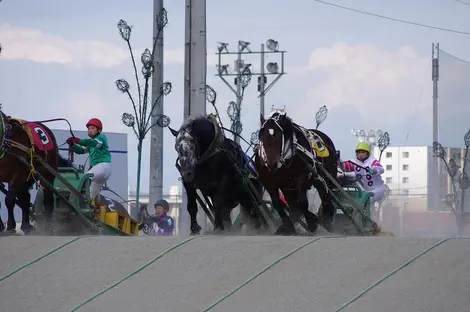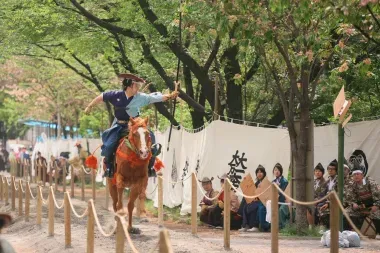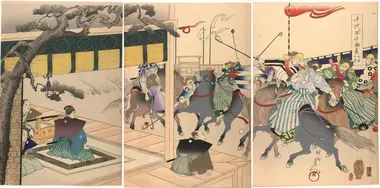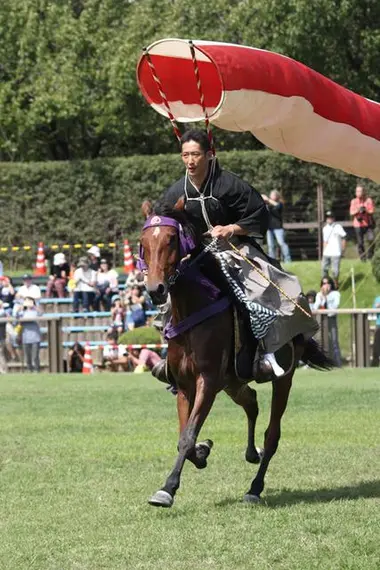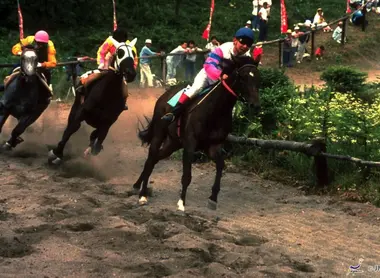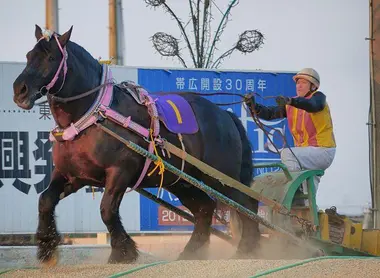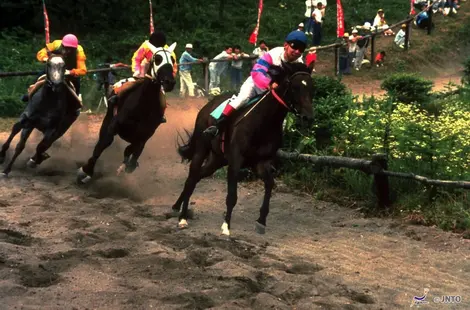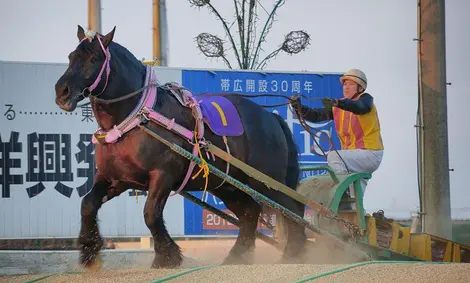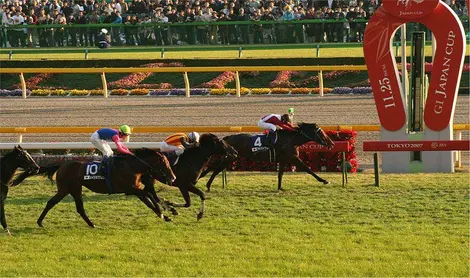Horses in Japan
The horse occupies a special place in Japanese culture and history. Imported from Asia in the 4th century, this emblematic animal has profoundly influenced the traditions, beliefs and practices of the Japanese archipelago. Even today, the horse remains omnipresent in many aspects of Japanese society, from religious rituals and traditional festivals to the modern equestrian industry. Let's discover together the fascinating role of the horse in Japan, from Shinto shrines to contemporary racecourses.
The history of the horse in Japan
The first horses arrived in Japan in the 4th century, probably imported from Central Asia or the Asian steppes. These equids were probably descendants of the Mongolian hemione, the Tarpan or Przewalski's horse. Initially, these animals were not domesticated, but it was between the 3rd and 4th centuries B.C. that cohabitation links were established between humans and horses.
The introduction of the horse to Japan is thought to have been linked to the invasion of warriors from the north, probably Korea, who used these mounts for military purposes. Over the centuries, the horse became an integral part of Japanese culture, first for warlike purposes, then acquiring a religious dimension. As early as the 8th century, the presence of domesticated horses is mentioned in the Kojiki, a collection recounting the genesis of Japan.
In the Middle Ages, the use of horses diversified, extending to agriculture, fishing and transport. It was not until the Meiji era (1868-1912) that horse-riding became widespread as a leisure activity, although it remained reserved for a certain elite due to its high cost.
The horse in Japanese culture and tradition
The horse occupies a central place in Japanese culture and tradition, particularly in Shintoism, Japan's indigenous religion. Considered the sacred mount of the kami (Japanese deities), the horse is at the heart of many rituals and beliefs.
During the Nara period (710-794), the practice of shinme developed. This involved offering a horse as a votive offering to a shrine, to serve as a divine mount. Some shrines even required a horse of a specific color, depending on the nature of the prayer. For example, a black horse was offered to pray for rain, while a white horse was given to ask for an end to precipitation.
Over time, this costly practice evolved. Devotees began to offer representations of horses in the form of sculptures or paintings on wooden plaques called ema (literally "horse images"). This tradition spread to other subjects from the Muromachi period onwards.
Today, although few shrines perpetuate the tradition of keeping horses alive, some, like Nikko's Tôshô-gû, still keep stables. Others, like the famous Itsukushima-jinja in Miyajima, display fake horses as a reminder of this tradition.
Traditional equestrian practices in Japan
Japanese equestrian culture is rich in practices inherited from military arts and religious traditions. Among these practices, yabusame, a form of archery on horseback, occupies a special place.
Yabusame is an ancestral martial art that combines horsemanship and archery. In this spectacular discipline, archers, mounted on galloping horses, shoot arrows at targets. This practice, which requires great skill, is still presented at certain festivities, notably at Kamakura's Tsurugaoka Hachiman-gû every September.
Another notable equestrian tradition is kurabe uma, horse races that have existed since the Heian period (794-1185). Originally held at the imperial court, these races are now part of Shinto ceremonies, such as those held at Kyoto's Kamigamo-jinja shrine every May 5.
Among the most picturesque equestrian celebrations is the Chagu Chagu Umako, held every second Saturday in June at the Morioka Hachiman-gû shrine in Iwate prefecture. During this 15-kilometer procession, colorfully harnessed horses cross the countryside to the sound of bells, a 200-year-old tradition celebrating the end of the rice-planting season.
The horse in Shintoism and religious rituals
In Shintoism, the horse occupies a privileged place as the sacred mount of the kami. This association between horses and the divine is reflected in numerous rituals and traditions that are still very much alive today.
At Osaka's Sumiyoshi Taisha shrine, the Ao-uma shinji tradition holds that seeing a white horse at the start of the year protects against evil spirits and brings longevity. Similarly, at the Ise Grand Shrine, seeing a sacred horse led by a priest early in the morning on a day with the number 1 is considered an omen of good fortune.
The uma dashi matsuri, festivals where the horse serves as a mount for the kami, are still practiced today. During these ceremonies, a special saddle and a gohei (a stick decorated with strips of white paper) are placed on the horse. Young men firmly hold the animal's reins, allowing the kami's spirit to take its place on the mount.
Other festivities featuring horses are part of Japan's intangible cultural heritage. Such is the case of the Soma Nomaoi, a wild horse gathering ceremony held in the Soma region and recognized as intangible national heritage since 1978.
The modern horse-racing industry in Japan
The modern horse-racing industry in Japan took off in 1862, when foreign residents organized the first horse races in Yokohama. Since then, horse racing has become extremely popular in the archipelago.
The Japan Racing Association (JRA), established in 1954, plays a central role in the organization and regulation of professional racing in Japan. Over the decades, the country has established itself as a Category 1 nation in equestrian sport, organizing international races of the highest level.
The success of Japanese horses in major international competitions has propelled Japan to 3rd place worldwide in the thoroughbred horse rankings. This success is largely due to the quality of breeding practised in Japan, with almost 90% of competition horses coming from stud farms located on the island of Hokkaido.
The country's most prestigious race is the Japan Cup, inaugurated in 1981 and held every November at the Tokyo racecourse in the town of Fuchu. This racecourse, which can accommodate up to 223,000 spectators, has also housed a horse racing museum since 1991.
In addition to professional races, amateur horse races (kusakeiba) are held regularly throughout the archipelago, bringing together members of riding clubs from all regions and of all ages, from children to the elderly.
Japanese horse breeds
Japan has several native horse breeds, although some are unfortunately threatened with extinction. These include
- The Kiso: a breed of ponies measuring less than 1.30 m at the withers, generally bay-colored. This breed has been considered endangered by the FAO since 2007.
- Misaki: a pony native to Miyazaki prefecture, measuring between 1.30 m and 1.35 m.
- Ban'ei horse: a popular breed of draught horse used in ban'ei racing. These horses are crossbred with breeds such as the Percheron, Trait Breton and Trait Belge.
- Hokkaido washu or Dosanko: a pony breed from the island of Hokkaido, descended from the Nambu, a famous Japanese war horse.
- Miyako: a pony breed originating from the island of Miyako, whose size has evolved over time through crossbreeding with European and American breeds.
- Taishuh: a pony originating from the Tsushima Islands in Nagasaki prefecture, unfortunately in decline.
- Yonaguni: a pony breed from southwestern Japan, considered in danger of extinction and subject to protection measures.
These local breeds are now threatened by the democratization of horse racing, which favors the breeding of faster foreign breeds such as Arabian or English thoroughbreds.
The horse in Japanese arts and crafts
The horse occupies an important place in Japanese arts and crafts, reflecting its cultural and spiritual status. Representations of horses can be found in various forms of artistic expression, from painting to sculpture to ritual objects.
In Buddhist statuary in Japan, the horse is often depicted as the mount of deities or important figures. Ema, wooden votive plaques, initially featured horse figures, before expanding to include other subjects.
The art of ukiyo-e, Japanese prints, includes many works featuring horses, whether in battle scenes, depictions of daily life or portraits of famous people. Artists such as Katsushika Hokusai created memorable works featuring horses, as in his series "The 36 Views of Mount Fuji".
In handicrafts, netsuke, the small carved objects used to attach objects to kimono belts, sometimes take the form of horses. These miniatures testify to the skill of Japanese craftsmen and the cultural importance of the horse.
Finally, haniwa, the terracotta funerary statuettes of the Kofun period (250-538), often include representations of horses. These ancient works testify to the importance of the horse in Japanese society from the earliest centuries of our era.
The horse continues to inspire Japanese artists and craftsmen, perpetuating an age-old tradition that reflects the animal's unique place in Japanese culture. Whether in traditional festivals or in Japanese sports, the horse remains a strong symbol of Japan's cultural heritage.
